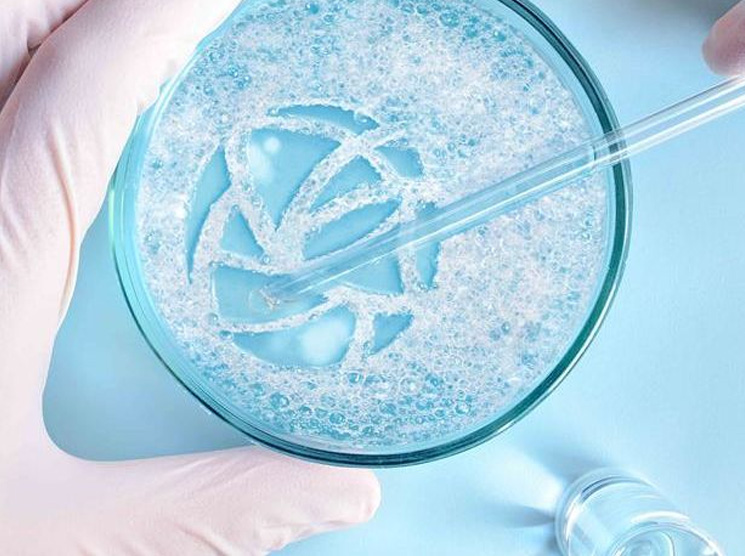Choosing the Best Defoamers for Your Manufacturing Line
Choosing the Best Defoamers for Your Manufacturing Line
Blog Article
The Role of Defoamers in Enhancing Item High Quality and Efficiency
In numerous producing processes, the presence of foam can substantially hinder product high quality and functional effectiveness. Defoamers act as essential additives that minimize this problem, ensuring smoother manufacturing operations while improving the functional and visual features of the end products (defoamers). Their application extends a plethora of industries, from food and drink to pharmaceuticals, where uniformity and reliability are paramount. However, the choice of the ideal defoamer can be crucial to achieving optimal results, increasing important inquiries about solution compatibility and efficiency metrics that warrant further expedition.
Comprehending Defoamers
Comprehending the duty of defoamers is necessary for preserving product top quality throughout numerous industries. Defoamers are chemical ingredients made to avoid the formation and decrease of foam in fluid systems, which can negatively impact procedures such as mixing, filling, and surface tension. Foaming can lead to inefficiencies, item issues, and compromised visual appeal, making defoamers a crucial component in making procedures.
In commercial applications, defoamers help to enhance item consistency and stability. The effective usage of defoamers not just guarantees smoother production procedures however additionally contributes to premium item efficiency.
Furthermore, the selection and formulation of a defoamer need to line up with certain application needs, such as compatibility with other components, effectiveness under varying temperature level and pH problems, and prospective regulative constraints. Ultimately, comprehending defoamers' features and their significance in various formulas is vital for enhancing production and making certain the finest final result.
Sorts Of Defoamers
Defoamers can be classified into numerous kinds based on their make-up and device of action. The primary kinds consist of silicone-based, non-silicone natural, and inorganic defoamers.
Silicone-based defoamers are amongst the most effective, primarily due to their capacity to spread quickly on the fluid surface area and interrupt foam development. Their unique chemical structure permits remarkable stability, making them appropriate for high-temperature applications and settings with differing pH levels.
Non-silicone organic defoamers, usually composed of fatty acids or all-natural oils, are valued for their biodegradability and reduced poisoning. These are usually utilized in food and drink applications where security and ecological impact are critical.
Inorganic defoamers, that include substances like talc or calcium carbonate, act by boosting the density of the liquid, therefore reducing foam security. They are often made use of in industrial procedures where compatibility with various other products is not a problem.
Each kind of defoamer has unique benefits and constraints, enabling tailored solutions relying on the certain foaming problems come across in various applications. Comprehending these distinctions is essential for enhancing performance and accomplishing preferred product high quality.
Applications Across Industries
Numerous sectors leverage defoamers to boost product quality and functional effectiveness. In the food and beverage market, defoamers are crucial in procedures such as brewing and dairy products manufacturing to stop foam development, which can lead to ineffectiveness and product variance. By managing foam, producers can guarantee much better return and a much more uniform product.
In the pharmaceutical market, defoamers play a crucial duty in the formulation of fluid medicines, where excessive foam can restrain mixing and precise dosing. Their usage helps keep the stability of the solutions and assists in smoother production processes.
The paint and coatings sector likewise relies upon defoamers to improve the performance of items throughout application. By decreasing foam, these ingredients ensure a smoother surface and boost the visual qualities of the final product.

Advantages of Using Defoamers
While the application of defoamers varies throughout sectors, their advantages regularly enhance item quality and process efficiency. One significant advantage is the reduction of foam formation throughout manufacturing processes, which can or else cause production delays and incongruities in product quality. By minimizing foam, defoamers read this article allow a smoother flow of materials, facilitating extra reliable operations and minimizing the possibility of devices breakdowns.
In addition, the usage of defoamers can enhance the look and appearance of last items. In sectors such as finishings, paints, and food handling, excessive foam can compromise the aesthetic appearances and general top quality, while the suitable defoamer application makes sure an uniform coating and preferable qualities. Moreover, defoamers can contribute to cost financial savings by reducing waste during production and enhancing the usage of resources (defoamers).

Selecting the Right Defoamer
Choosing the right defoamer is critical for optimizing production processes and making sure product quality. The option of defoamer influences not just the performance of foam control yet also the general performance characteristics of the final product. Elements to think about include the sort of application, the chemistry of the formulation, and the environmental problems under which the product will be utilized.
Different markets may require specific defoamer kinds, such as silicone-based, organic, or polymeric defoamers. Recognizing the compatibility of the defoamer with the key ingredients is vital to prevent unfavorable reactions that could compromise item stability. Furthermore, the defoamer's efficiency in numerous temperature levels and pH levels should be examined to make sure regular efficiency.
Examining the defoamer in small applications can provide useful understandings into its efficiency and suitability. Factor to consider of governing conformity, specifically in food, pharmaceuticals, and cosmetics, is paramount in selecting a defoamer. Eventually, a comprehensive evaluation of these aspects will certainly bring about the option of a defoamer that not only regulates foam successfully yet likewise enhances the top quality and efficiency of the end product.
Conclusion

In conclusion, defoamers are essential ingredients that considerably boost item high quality and performance throughout different markets. The strategic option and application of defoamers lead to set you back financial savings, maximized resource usage, and boosted consumer contentment.
Frothing can lead to inefficiencies, product problems, and jeopardized aesthetic charm, making defoamers a crucial part in making procedures.

Report this page